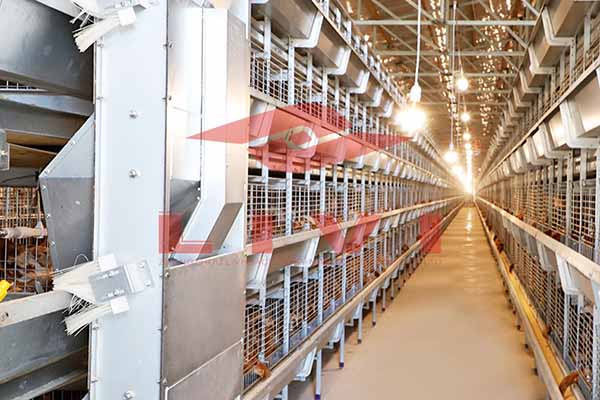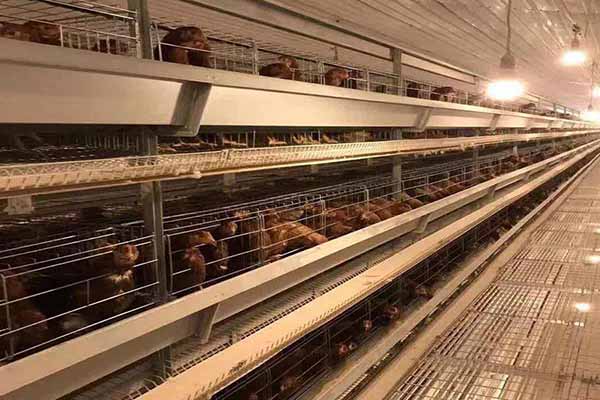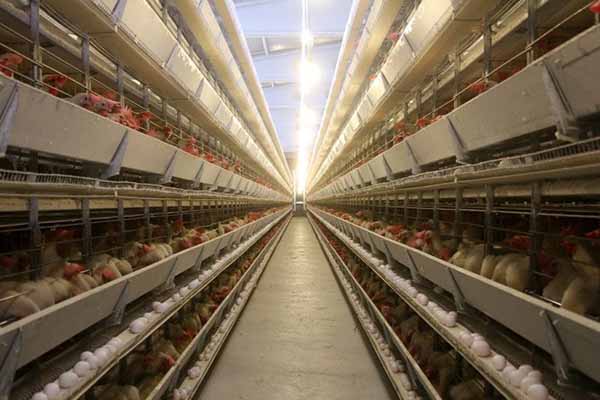Optimizing Large-scale Poultry Farming with 20,000 Bird Capacity Cages
Time : 2025-06-28
Large-scale poultry farming has become a crucial sector in the global food industry, providing a significant portion of the world’s protein needs. With the increasing demand for poultry products, efficient and sustainable farming practices are essential. One of the key components of an effective large-scale poultry operation is the use of high-capacity cages designed to house up to 20,000 birds. This article delves into the intricacies of these cages, focusing on their design, functionality, and the benefits they offer to modern poultry farming.

Introduction to Large-scale Poultry Farming Cages
Large-scale poultry farming cages are specifically designed to accommodate a high number of birds in a confined space. These cages are engineered to maximize efficiency, minimize disease spread, and ensure the overall well-being of the poultry. The design of these cages plays a pivotal role in the success of a large-scale poultry farming operation.
Key Design Considerations
When designing large-scale poultry farming cages for 20,000 birds, several factors must be taken into account:
- Space Allocation: Ensuring each bird has adequate space is crucial for their health and productivity. The cage size, therefore, must be calculated based on the species of poultry and the expected growth rate.
- Airflow and Ventilation: Proper ventilation is essential to maintain a healthy environment. Cages should be designed with adequate openings to allow for fresh air exchange, reducing the risk of respiratory diseases.
- Manure Management: Efficient manure removal systems are necessary to maintain hygiene and prevent the spread of diseases. The design should include a system for collecting and disposing of manure without disrupting the birds.
- Feeding and Watering Systems: Automated feeding and watering systems are essential for maintaining consistent nutrition and hydration. These systems should be reliable and easy to maintain.
- Environmental Control: The ability to regulate temperature and humidity is vital for the health and comfort of the birds. Cages should be equipped with systems to control the internal environment.
Functionality of Large-scale Poultry Farming Cages
The functionality of large-scale poultry farming cages is paramount for the success of any farming operation. Here are some key functionalities that these cages offer:
Health and Welfare
High-capacity cages are designed to promote the health and welfare of the birds. The following features contribute to this:
- Preventing Aggression: The design of the cages helps to minimize aggression among birds, reducing stress and injuries.
- Easy Monitoring: The clear construction of the cages allows for easy observation of the birds, facilitating early detection of health issues.
- Comfortable Roosting Areas: Cages are equipped with roosting bars that provide a comfortable place for birds to rest, reducing the risk of leg disorders.
Operational Efficiency
Efficiency is a cornerstone of large-scale poultry farming. The following aspects contribute to operational efficiency:

- Automated Systems: Automated feeding, watering, and environmental control systems reduce labor costs and improve consistency.
- Easy Maintenance: Cages are designed for easy cleaning and maintenance, reducing downtime and ensuring a continuous supply of poultry products.
- Scalability: The modular design of the cages allows for easy expansion as the farm grows.
Benefits of Large-scale Poultry Farming Cages
Implementing large-scale poultry farming cages for 20,000 birds offers several benefits:

Economic Advantages
- Increased Production: High-capacity cages enable farmers to produce more poultry per unit of space, maximizing their revenue potential.
- Reduced Costs: Efficient use of space and automated systems can lead to significant cost savings over time.
Environmental Benefits
- Resource Efficiency: By optimizing the use of space and resources, large-scale poultry farming cages contribute to a more sustainable approach to poultry production.
- Reduced Waste: Efficient manure management systems minimize waste and reduce the environmental impact of poultry farming.
Conclusion
Large-scale poultry farming cages for 20,000 birds are a cornerstone of modern poultry farming. Their design and functionality are crucial for ensuring the health, welfare, and productivity of the birds while maximizing operational efficiency and sustainability. As the demand for poultry products continues to grow, investing in high-quality, professional-grade cages is a strategic decision that can lead to long-term success in the poultry industry.











